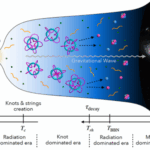Exploring the Benefits of Visualization Techniques for Goal-Setting and Confidence-Building.

In the pursuit of self-improvement, visualization techniques are increasingly recognized for their transformative power. Visualization goes beyond mere imagination; it’s a deliberate practice that can spark real changes in mindset and drive. From athletes to life coaches, people across diverse fields have embraced visualization as a way to sharpen focus, boost confidence, and keep motivation alive. But how does it really work? And why is it so effective in helping people move closer to their goals?
The beauty of visualization lies in its simplicity and adaptability. At its core, it’s about creating vivid mental images of desired outcomes and aligning thoughts, emotions, and actions with those images. Studies have shown that by mentally rehearsing success, individuals can actually increase their likelihood of achieving it. Visualization is like a mental dress rehearsal for the future—one that can make aspirations feel tangible and achievable long before they’re realized. Through consistent practice, visualization allows people to stay focused, foster a resilient mindset, and take action with confidence.
The Benefits of Visualization: Fueling Personal Growth and Success
 Image source: Pexels
Image source: Pexels
Visualization isn’t just a quick pick-me-up; it’s a powerful tool backed by psychology that can make a lasting impact on personal growth. Regular visualization practice can sharpen focus, boost confidence, ease anxiety, and fire up motivation. Here’s a closer look at how visualization can help you reach your goals:
1. Sharpening Focus and Clarity
Visualization brings clarity to what you truly want. When you picture your goals, you create a clear, detailed image of your desired outcome. This mental picture not only strengthens your commitment but also lights the way forward. With a vivid sense of where you’re headed, it’s easier to figure out the steps needed and focus on actions that bring you closer to your goal.
2. Building Self-Confidence
Lack of self-confidence can hold anyone back, but visualization tackles this by letting you “see” yourself succeeding. Mentally rehearsing moments of achievement makes success feel more familiar and real, boosting belief in your abilities. This simple habit can turn self-doubt into a confidence boost, fueling continuous progress.
3. Reviving Motivation and Determination
Motivation can dip, especially when things get tough. Visualization helps recharge determination by connecting you emotionally to your goals. By vividly imagining the rewards of achieving your dreams, you gain a motivational push that keeps you going, even when obstacles arise.
4. Easing Anxiety and Stress
Visualization can be a calming retreat from life’s pressures. Mentally crafting a peaceful scene or visualizing a successful outcome helps reduce anxiety and gives a sense of control. This “mental oasis” provides relief from stress and strengthens emotional resilience over time, creating a calm mindset that lasts.
5. Improving Performance and Building Skills
Visualization isn’t only about seeing the end goal—it’s also great for practicing skills. Athletes use it to mentally rehearse specific moves, enhancing technique and mental prep. This practice extends to everyday challenges, like giving a presentation or prepping for an interview. Visualizing these scenarios builds confidence and sharpens skills, so you’re better prepared for real-life success.
How Visualization Techniques Support Goal Setting and Motivation
Visualization can play a powerful role in goal setting and motivation by helping individuals create a vivid mental image of their success. By picturing their future achievements, people tap into a sense of motivation that feels real and energizing, reinforcing their commitment to the journey.
One key benefit of visualization is its ability to clarify and refine goals. When individuals visualize specific details of their aspirations, they can break down what success looks like and identify actionable steps to achieve it. This mental exercise not only makes the goal-setting process more efficient but also helps establish practical milestones for tracking progress along the way.
Moreover, visualization fosters a deep emotional connection with one’s goals. Regularly picturing the positive changes and rewards of achieving their aims strengthens people’s determination, helping them stay focused amid distractions. This emotional bond with their vision keeps them motivated, especially when facing challenges.
Finally, visualization contributes to resilience. By mentally rehearsing how to overcome obstacles, individuals develop a proactive mindset that prepares them for setbacks. This mental practice reinforces the idea that challenges are part of the journey and can ultimately lead to greater success. Through visualization, individuals build the resilience they need to stay committed and motivated, making their goals feel more attainable.
Types of Visualization Techniques
 Image source: Shutterstock
Image source: Shutterstock
Visualization can take many forms, allowing individuals to tailor the practice to their personal preferences. Here are three popular types of visualization techniques that can be incorporated into goal-setting and personal development practices:
- Mental Imaging: A straightforward visualization technique where individuals create detailed mental pictures of their goals. This technique is about building a sensory-rich image, imagining specific sights, sounds, and sensations associated with the desired outcome. Mental imaging works as a mental rehearsal, helping people experience success in their mind before they achieve it in reality. By mentally practicing their actions and goals, individuals enhance their focus, boost self-belief, and increase motivation.
- Creative Visualization: Creative visualization goes beyond imagining an outcome—it’s about experiencing the emotions associated with achieving that outcome. This technique requires individuals to feel the joy, excitement, and satisfaction they would have if they had already reached their goal. By aligning thoughts, emotions, and intentions, creative visualization reinforces a positive mindset, helping individuals attract the success they envision. This technique is especially helpful in overcoming limiting beliefs and nurturing a mindset open to new possibilities.
- Guided Imagery: For those who find visualization challenging, guided imagery offers a structured approach. This technique involves following along with recorded instructions that guide the listener through specific visualizations. Guided imagery often incorporates calming sounds, music, and positive affirmations to deepen the visualization experience. By providing a relaxed and structured mental journey, guided imagery helps individuals release stress, gain clarity, and strengthen their connection to their goals.
Steps to Successfully Use Visualization Techniques for Motivation and Goal Setting
To harness the full power of visualization, it’s important to approach it with intention and consistency. Here are actionable steps to help individuals use visualization effectively:
1. Set a Clear Goal
Every successful visualization begins with a clearly defined goal. To make the goal-setting process more effective, try setting a SMART goal—specific, measurable, achievable, relevant, and time-bound. This structure provides focus and clarity, making it easier to picture the end result and the path to get there. When the mind has a specific target to focus on, visualization becomes a more powerful tool for progress.
2. Create a Vivid Image of Success
After defining a clear goal, take time to imagine yourself having achieved it. Focus on sensory details: What does success look, feel, sound, or even smell like? The more vivid the image, the more effective the visualization. This practice not only strengthens focus but also builds an emotional attachment to the goal, making it feel more tangible and inspiring continuous effort.
3. Reinforce the Image Regularly
Visualization is most effective when practiced consistently. To keep your goal top of mind, consider using tools like a vision board—a physical or digital collage of images and quotes that reflect your aspirations. Reviewing this board daily can remind you of your goals and reinforce the mental image of success. Alternatively, set aside a few minutes each day for a focused visualization session, where you relax and fully immerse yourself in the desired outcome.
4. Stay Positive and Take Action
While visualization is powerful, it must be combined with action to yield results. A positive and proactive mindset will help you stay on course. Practice gratitude for your progress and embrace adaptability when challenges arise. Rather than letting setbacks deter you, view them as learning opportunities. Taking consistent, purposeful action alongside visualization creates a powerful synergy, helping you make steady progress toward your goals.
Cultivating Success Through Visualization

Visualization is more than just a mental exercise; it’s a bridge between intention and action, a tool that empowers individuals to make their goals feel real and attainable. By regularly engaging in visualization, people not only clarify their aspirations but also build the emotional resilience needed to pursue them, especially when faced with obstacles. When you can vividly picture yourself succeeding, achieving that success becomes less daunting and more within reach. This practice instills a mindset where goals are not distant dreams but achievable milestones along a well-mapped journey.
The beauty of visualization lies in its simplicity and adaptability. Whether it’s mental imaging, creative visualization, or guided imagery, these techniques can fit seamlessly into any routine and be tailored to each person’s unique needs. Visualization serves as a constant reminder of what truly matters, keeping focus and motivation alive even during challenging times. It’s a way to stay grounded in one’s goals, reinforcing the belief that success is not only possible but inevitable with the right mindset and dedication.
Embracing visualization is about fostering a proactive approach to life’s challenges and opportunities. For those striving for personal growth, visualization opens doors to self-discovery, resilience, and empowerment. By aligning one’s thoughts, emotions, and actions with their aspirations, individuals cultivate a sense of purpose and direction. Over time, visualization becomes more than just a technique—it evolves into a life philosophy, guiding people to live intentionally and reach their full potential.
Featured image source: Shutterstock
Loading...






